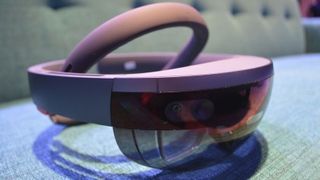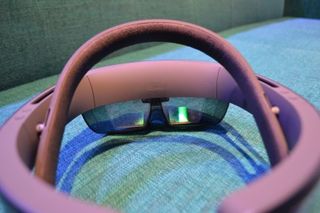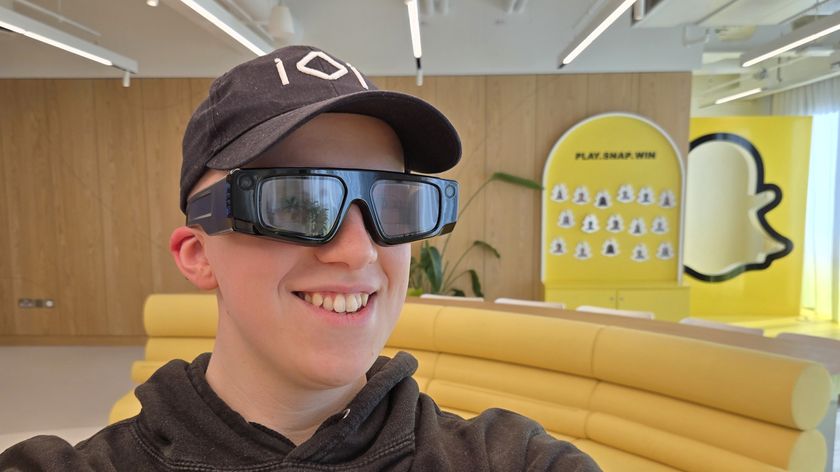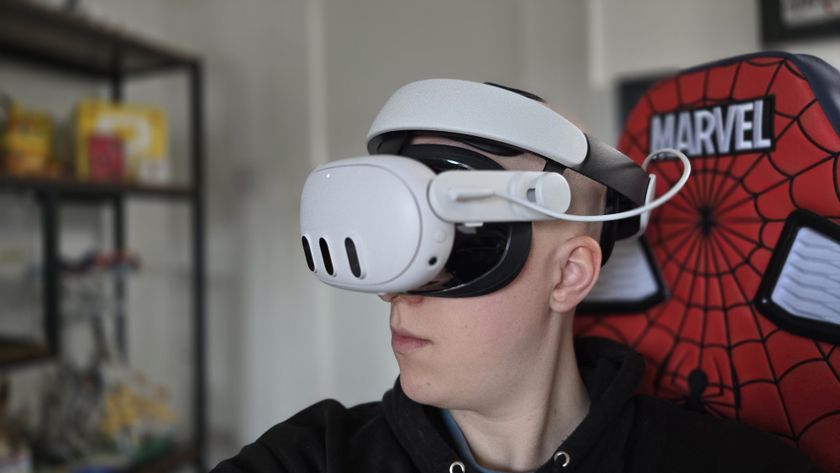Microsoft HoloLens offers a kind of magic virtual reality can't
HoloLens isn't without its limits, but those I can live with

No barriers
Microsoft said during my session that the No. 1 requested feature for the headset was sharing, and I think it's on its way to making this one of the key selling points of HoloLens.
Anyone could potentially create a game or experience for HoloLens, then share it with others who own a headset, allowing everyone to interact not only with the augmented elements of the game but also with each other.
While Oculus Rift lets you meet other players' avatars in virtual rooms and you can engage in multi-player games with anyone on the planet, HoloLens allows for true social interaction.
You can see and talk to players who are literally breathing the same air as you, seek them out, and rub it in their faces when you score a direct hit on their avatars.
One of HoloLens' great pluses is its freedom of movement because you aren't tethered to a PC, as is the case with every premium VR headset right now. My mentor said that in testing, they've found the holograms stay visible even down long hallways or in other rooms.
The in-house team really hasn't hit on its distance limit yet, she said, meaning your HoloLens game could stretch as far as you wanted (though you'd likely need a Wi-Fi connection for the most robust experience).
It's these two elements - seeing and interacting with real-world objects, including people, and being able to move around untethered - that, for me, give HoloLens an edge over its virtual reality competitors.
Get daily insight, inspiration and deals in your inbox
Sign up for breaking news, reviews, opinion, top tech deals, and more.
Don't get me wrong, I'd still would love to own an Oculus Rift, and I can right now if I ordered one.
But, if someone forced me to pick, I'd choose HoloLens because, as a non-gamer, I see myself getting more use and enjoyment out of it through casual games, educational applications and generally being able to interact with the world while wearing it, rather than being a passive participant in a VR environment.

HoloLens hardware and hang-ups
The HoloLens Development Edition that's shipping to developers is a high-end device. At $3,000 (about £2,160/AU$4,202), it should be.
The majority of the headset is made of plastic and the inner and outer bands have a soft, rubberized feel. While I did strike on the right fit after a few times putting it on, the headset is weighty and would frequently slip down my face.
Microsoft lists HoloLens at 579g/1.2 pounds, but it felt heavier than that. This might be due to so much of its weight being front-loaded, making it feel like it's heavier on your face than it actually is.
It's here that Oculus Rift has HoloLens handily beat. Rift is well balanced and generally fits snuggly on your head. HoloLens' weight isn't evenly distributed, and it's easy for the headset to slip down because it's not as securely strapped on.
The resolution and latency of the holograms were remarkably better than my first experience with the headset a year ago. The holograms were more vibrant and sharper, and those fiery balls moved smoothly towards their targets.
For all its improvements, the most obvious issue with HoloLens compared to its VR counterparts remains its field of view. Take heed: When Microsoft shows those demos of HoloLens onstage, the holograms it projects are much larger than what you actually see when you're wearing the headset.
Microsoft is essentially projecting the holograms through the headset's two lenses, so it's limited in where that projection can go. Whereas Rift, Vive and PlayStation VR offer full immersion, HoloLens holographs live within the limited space of the lenses. You can tell where the boundary of that space is because at some points, you can literally see it.
It's like having a slightly lighter rectangle layered on top of everything you're seeing. If your gaze wanders outside this rectangle, then the holograms are cut off or disappear completely.
When you do see the holograms, it's amazing, but it's all too easy for the headset to slip, causing you to loose your alignment with the rectangle.
Still, the limited field of view alone wouldn't keep from dropping $3,000 on a HoloLens because what you see and experience is so good. What would make me think twice, though, is the headset's weight distribution and frequent slippage, which leads to the field of view being thrown off.
If Microsoft can better balance HoloLens' weight - and I came into a spare three grand - it would easily be my next big splurge.
Michelle was previously a news editor at TechRadar, leading consumer tech news and reviews. Michelle is now a Content Strategist at Facebook. A versatile, highly effective content writer and skilled editor with a keen eye for detail, Michelle is a collaborative problem solver and covered everything from smartwatches and microprocessors to VR and self-driving cars.












